Posts for: HamBar06
Nov 10, 2022 09:57:18 #
J-SPEIGHT wrote:
Nice set.
Thanks for looking and the favorable comment.
Larry B.

Nov 9, 2022 21:10:36 #
NMGal wrote:
Really nice historical tour.
Hi, Thank you.
Larry B.

Nov 9, 2022 21:08:44 #
Longshadow wrote:
Nice set!
Thanks for looking, glad you liked them.
Larry B.

Nov 9, 2022 15:35:38 #
Greetings,
More photos from a dusty archival collection. These are from 1985 visit to a very interesting city. I hope you enjoy looking.
Larry B.
History of Edinburgh
While the area around modern-day Edinburgh has been inhabited for thousands of years, the history of Edinburgh as a definite settlement can be traced to the early Middle Ages when a hillfort was established in the area, most likely on the Castle Rock. From the seventh to the tenth centuries it was part of the Anglian Kingdom of Northumbria, becoming thereafter a royal residence of the Scottish kings. The town that developed next to the stronghold was established by royal charter in the early 12th century, and by the middle of the 14th century was being described as the capital of Scotland. The area known as the New Town was added from the second half of the 18th century onwards. Edinburgh was Scotland's largest city until Glasgow outgrew it in the first two decades of the 19th century. Following Scottish devolution in the very late 20th century, Scotland's Parliament was established in Edinburgh.
Edinburg Castle
Following the ‘Union of the Crowns’ of 1603, Edinburgh Castle was rarely visited by the reigning monarch. From the 1650s it grew into a significant military base. Some 600 troops were housed in the New Barracks, built during the Napoleonic Wars with France and is still in use by the military today.
Not everyone who came to the castle enjoyed their stay. Life was truly grim for many of the prisoners who were locked up in the vaults below Crown Square. As a formidable stronghold, the castle was the most secure lock-up in Scotland. Between 1757 and 1814 the vaults became home to many hundreds of prisoners of war.
White Horse Close
Edinburgh’s Royal Mile is filled with hidden closes and courtyards that have unexpected and breathtaking views to discover. White Horse Close a hidden courtyard filled with quirky historic buildings and is also a fabulous photography location. Many believe that the close got its name from this area being a royal mews for Mary Queen of Scots. She would stable her favorite white palfrey here as the place was so close to Holyrood Palace.
White Horse Close wasn’t this courtyard’s first name. In fact, it was originally called Ord’s Close after the architect Lawrence Ord.
Knox house
The visitor's pamphlet states that the house "was Knox's home only for a few months during the siege of Edinburgh Castle, but it is believed that he died here. It appears to have become widely accepted as "John Knox's House" from the mid-19th century onwards, after Victorian writers like Robert Chambers and Sir Daniel Wilson had repeated the popular tradition, first recorded c.1800, of attaching Knox's name to it. After the Disruption in the Church of Scotland in 1843, the house was bought by the new Free Church, a fact which may have strengthened belief in its association with Knox.
St. Nicholas Church
This magnificent structure crowns a bold eminence, which rises abruptly from the surface of the river to near the center of the town. It presents from every point of view, a striking specimen of architectural skill. The old Norman church of St. Nicholas was, it is said, destroyed in the year 1216, and the present edifice was finished in 1350.
Princes St. Gardens
Princes Street Gardens is a popular park in Edinburgh. It is Edinburgh’s World Heritage Site. Edinburgh Castle overlooks the gardens and during spring photographers use the beautiful cherry blossom trees to frame the Castle. It is worth taking a walk around the gardens to find the photogenic Gardener’s Cottage. Located throughout this garden are a number of monuments such as a memorial to Robert Louis Stevenson, the Scottish novelist who wrote a very significant book about Edinburgh, Strange Case of Dr Jekyll and Mr Hyde.
Nelson Monument
The Nelson Monument is a commemorative tower in honor of Vice Admiral Horatio Nelson, located in Edinburgh, Scotland. It is situated on top of Calton Hill, and provides a dramatic termination to the vista along Princes Street from the west. The monument was built between 1807 and 1816 to commemorate Nelson's victory over the French and Spanish fleets at the Battle of Trafalgar in 1805, and his own death at the same battle.
National Museum of Scotland
Museums in Edinburgh don't charge an entry fee...The National Museum of Scotland has exhibits and collections on topics ranging from Scottish antiquities, anthropology, history, science and technology, as also world culture. Created after the merger of two museums, the National Museum of Scotland is massive, divided between two connected buildings.
More photos from a dusty archival collection. These are from 1985 visit to a very interesting city. I hope you enjoy looking.
Larry B.
History of Edinburgh
While the area around modern-day Edinburgh has been inhabited for thousands of years, the history of Edinburgh as a definite settlement can be traced to the early Middle Ages when a hillfort was established in the area, most likely on the Castle Rock. From the seventh to the tenth centuries it was part of the Anglian Kingdom of Northumbria, becoming thereafter a royal residence of the Scottish kings. The town that developed next to the stronghold was established by royal charter in the early 12th century, and by the middle of the 14th century was being described as the capital of Scotland. The area known as the New Town was added from the second half of the 18th century onwards. Edinburgh was Scotland's largest city until Glasgow outgrew it in the first two decades of the 19th century. Following Scottish devolution in the very late 20th century, Scotland's Parliament was established in Edinburgh.
Edinburg Castle
Following the ‘Union of the Crowns’ of 1603, Edinburgh Castle was rarely visited by the reigning monarch. From the 1650s it grew into a significant military base. Some 600 troops were housed in the New Barracks, built during the Napoleonic Wars with France and is still in use by the military today.
Not everyone who came to the castle enjoyed their stay. Life was truly grim for many of the prisoners who were locked up in the vaults below Crown Square. As a formidable stronghold, the castle was the most secure lock-up in Scotland. Between 1757 and 1814 the vaults became home to many hundreds of prisoners of war.
White Horse Close
Edinburgh’s Royal Mile is filled with hidden closes and courtyards that have unexpected and breathtaking views to discover. White Horse Close a hidden courtyard filled with quirky historic buildings and is also a fabulous photography location. Many believe that the close got its name from this area being a royal mews for Mary Queen of Scots. She would stable her favorite white palfrey here as the place was so close to Holyrood Palace.
White Horse Close wasn’t this courtyard’s first name. In fact, it was originally called Ord’s Close after the architect Lawrence Ord.
Knox house
The visitor's pamphlet states that the house "was Knox's home only for a few months during the siege of Edinburgh Castle, but it is believed that he died here. It appears to have become widely accepted as "John Knox's House" from the mid-19th century onwards, after Victorian writers like Robert Chambers and Sir Daniel Wilson had repeated the popular tradition, first recorded c.1800, of attaching Knox's name to it. After the Disruption in the Church of Scotland in 1843, the house was bought by the new Free Church, a fact which may have strengthened belief in its association with Knox.
St. Nicholas Church
This magnificent structure crowns a bold eminence, which rises abruptly from the surface of the river to near the center of the town. It presents from every point of view, a striking specimen of architectural skill. The old Norman church of St. Nicholas was, it is said, destroyed in the year 1216, and the present edifice was finished in 1350.
Princes St. Gardens
Princes Street Gardens is a popular park in Edinburgh. It is Edinburgh’s World Heritage Site. Edinburgh Castle overlooks the gardens and during spring photographers use the beautiful cherry blossom trees to frame the Castle. It is worth taking a walk around the gardens to find the photogenic Gardener’s Cottage. Located throughout this garden are a number of monuments such as a memorial to Robert Louis Stevenson, the Scottish novelist who wrote a very significant book about Edinburgh, Strange Case of Dr Jekyll and Mr Hyde.
Nelson Monument
The Nelson Monument is a commemorative tower in honor of Vice Admiral Horatio Nelson, located in Edinburgh, Scotland. It is situated on top of Calton Hill, and provides a dramatic termination to the vista along Princes Street from the west. The monument was built between 1807 and 1816 to commemorate Nelson's victory over the French and Spanish fleets at the Battle of Trafalgar in 1805, and his own death at the same battle.
National Museum of Scotland
Museums in Edinburgh don't charge an entry fee...The National Museum of Scotland has exhibits and collections on topics ranging from Scottish antiquities, anthropology, history, science and technology, as also world culture. Created after the merger of two museums, the National Museum of Scotland is massive, divided between two connected buildings.
Edinburg Castle.
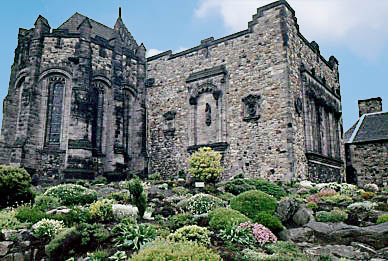
Whitehorse Close on Royal Mile.
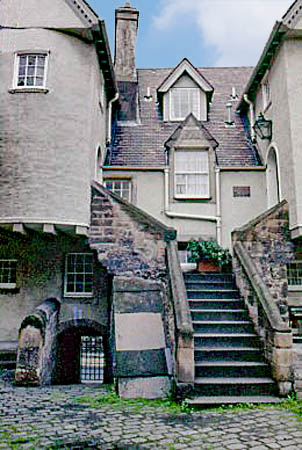
Castle Hill lane - entrance to Castle.
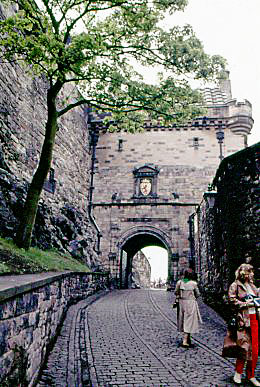
John Knox's House.
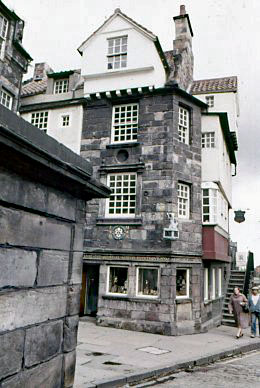
Marketplace and St. Nicholas Church.
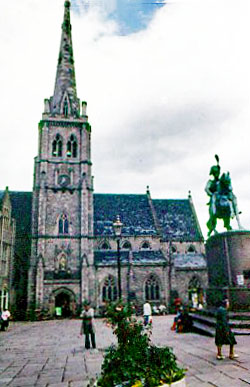
Prince Street Gardens - Caretaker's house.
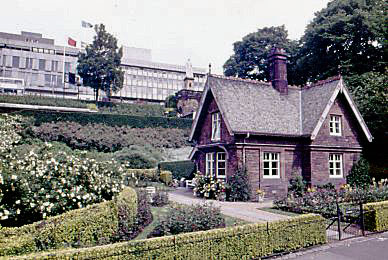
Prince Street - view to Nelson's Monument.
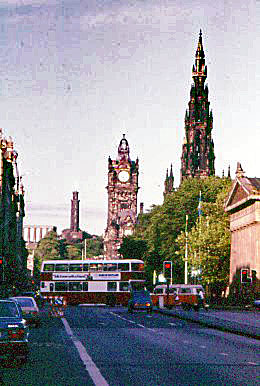
Ramsay Lodge.
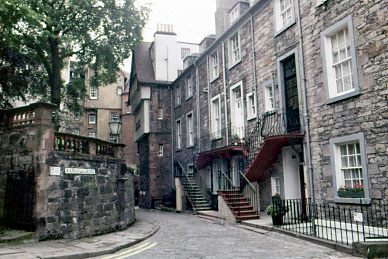
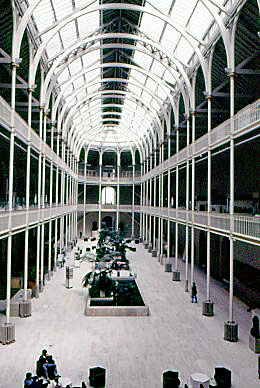
National Royal Scottish Museum - exhibit of Quetzal Bird.
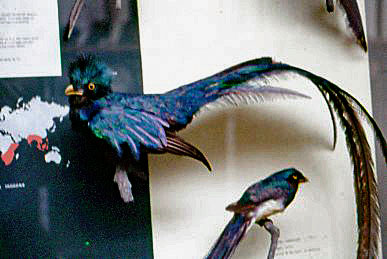
Oct 30, 2022 18:53:12 #
Oct 30, 2022 16:11:03 #
These are from the archives. Some of the slides were out of my control for more than 5 years and some have deteriorated more than others; probably due to storage failures and/or the various brands of film used. In spite of flaws, I thought you may be interested in seeing the locations.
Greece is a country steeped with ancient history and civilizations. As far back as 3000 BC the Cycladic civilization inhabited the area of Greece. The city states of Ancient Greece such as Athens and Sparta created one of the most advanced ancient civilizations in history, giving birth to many advanced concepts in government that are still used today. In 332 BC, Alexander the Great came into power. By 30 BC, all of Greece became part of the Roman Empire and then the Byzantium Empire until the arrival of the Ottoman Empire in the 1400s.
In World War II Greece was invaded by Italy and taken over by Germany. Greece is now a member of the European Union.
Athens is one of the oldest named cities in the world, having been continuously inhabited for perhaps 5,000 years. Situated in southern Europe, Athens became the leading city of Ancient Greece in the first millennium BC, and its cultural achievements during the 5th century BC laid the foundations of Western civilization.During the early Middle Ages, the city experienced a decline, then recovered under the later Byzantine Empire and was relatively prosperous during the period of the Crusades (12th and 13th centuries), benefiting from Italian trade. Following a period of sharp decline under the rule of the Ottoman Empire, Athens re-emerged in the 19th century as the capital of the independent and self-governing Greek state.
Acropolis The Acropolis is located on a flattish-topped rock that rises 490 ft above sea level in the city of Athens, with a surface area of about 7.4 acres.
In the mid-fifth century BC, the Acropolis became the seat of the Athenian League and Athens was the greatest cultural center of its time, Pericles initiated an ambitious building project which lasted the entire second half of the fifth century BC. Athenians and foreigners alike worked on this project, receiving a salary of one drachma a day. The most important buildings visible on the Acropolis today - that is, the Parthenon, the Propylaea, the Erectheion and the Temple of Athena Nike, were erected during 468 BC. Most of the major temples, including the Parthenon, were rebuilt by order of Pericles during the so-called Golden Age of Athens (460–430 BC). Phidias, an Athenian sculptor, and Ictinus and Callicrates, two famous architects, were responsible for the reconstruction.
DELPHI: previously called Pytho was a sacred precinct and served as the seat of Pythia, the major oracle, who was consulted about important decisions throughout the ancient classical world. The ancient Greeks considered the centre of the world to be in Delphi, according to the Suda, Delphi took its name from the Delphyne, the she-serpent who lived there and was killed by the god Apollo. The precinct occupies a delineated region on the south-western slope of Mount Parnassus. It is now an extensive archaeological site, and since 1938 a part of Parnassos National Park.
The Temple of Apollo at Delphi is part of the Panhellenic Sanctuary at Delphi and occupies a remote, but central location relative to Greek settlements. The temple's heightened position upon the mountain signifies both the prominence of Apollo and the sanctuary itself. Far from the influence of particular cities, but still central, the location of the sanctuary reinforces its Panhellenic nature and contributes to the idea that Apollo could be trusted as a neutral authority. Given its central location and difficult accessibility, the Temple of Apollo at Delphi was no ordinary site, but a place close to the gods.
The Oracle was located on a plateau along the slope of Mount Parnassus, in the Sanctuary of Apollo. Apollo spoke through his Oracle of Delphi, who was a priestess in an inner sanctum, where she sat on a tripod seat over an opening chasm in the earth. Seated over a crack in the ground, she would become intoxicated by the vapors, and she would fall into a trance, allowing Apollo to possess her spirit. In this trance maintained state the Pythia “raved,” and the priests of the temple interpreted her ravings into elegant verse. The translations often had ambiguity integrated into the answer.
The Statue of Antinous at Delphi was discovered in 1894 during excavations in Delphi. Antinous was a young Greek of extraordinary beauty from Bithynia, who became the beloved companion and lover of the Roman emperor Hadrian, but later died in the Nile under mysterious circumstances. Stricken by the death of Antinous, Hadrian, who was an admirer and a passionate devotee of classical Greek Antiquity gave orders that statues of the beautiful young man, whom he had loved so passionately, should be erected in all sanctuaries and cities of his vast empire. Furthermore he decreed the institution and establishment of Games in honor of Antinous, who thereafter was honoured and worshipped as a god. Thus a statue of Antinous was erected within the sanctuary of Delphi, after his death, in A.D. 130, and it was one of the most beautiful. 1964The statue was discovered upright on its pedestal, next to the wall alongside the holy Temple.
Meteora, meaning ‘middle of the sky' , is a unique phenomenon and without doubt one of the greatest sights in Greece. A drive through the region of Thessaly and a visit to Meteora – the monastic mountains – will leave you in awe.These ancient Greek Orthodox monasteries sit on top of sandstone towers, carved out by natural elements. Molded by wind and rain and by earthquakes ; really remarkable. Originally there were 24 religious centers built, of which six remain active.Access to these incredible buildings was once by a network of drawbridges, stairways and a system of ropes and pulleys to winch the monks up and down in baskets, so they were literally ‘suspended in the air'.
The Corinth Canal connects the Gulf of Corinth in the Ionian Sea with the Saronic Gulf in the Aegean Sea. It cuts through the narrow Isthmus of Corinth and separates the Peloponnese from the Greek mainland, making the peninsula an island. The canal was dug through the Isthmus at sea level and has no locks. It is 6.4 kilometres (4 miles) in length and only 24.6 metres (80.7 feet) wide at sea level, making it impassable for many modern ships. It was completed in 1893, but, due to the canal's narrowness, navigational problems, and periodic closures to repair landslides from its steep walls, it failed to attract the level of traffic expected by its operators. It is currently of little economic importance and is mainly a tourist attraction.
Greece is a country steeped with ancient history and civilizations. As far back as 3000 BC the Cycladic civilization inhabited the area of Greece. The city states of Ancient Greece such as Athens and Sparta created one of the most advanced ancient civilizations in history, giving birth to many advanced concepts in government that are still used today. In 332 BC, Alexander the Great came into power. By 30 BC, all of Greece became part of the Roman Empire and then the Byzantium Empire until the arrival of the Ottoman Empire in the 1400s.
In World War II Greece was invaded by Italy and taken over by Germany. Greece is now a member of the European Union.
Athens is one of the oldest named cities in the world, having been continuously inhabited for perhaps 5,000 years. Situated in southern Europe, Athens became the leading city of Ancient Greece in the first millennium BC, and its cultural achievements during the 5th century BC laid the foundations of Western civilization.During the early Middle Ages, the city experienced a decline, then recovered under the later Byzantine Empire and was relatively prosperous during the period of the Crusades (12th and 13th centuries), benefiting from Italian trade. Following a period of sharp decline under the rule of the Ottoman Empire, Athens re-emerged in the 19th century as the capital of the independent and self-governing Greek state.
Acropolis The Acropolis is located on a flattish-topped rock that rises 490 ft above sea level in the city of Athens, with a surface area of about 7.4 acres.
In the mid-fifth century BC, the Acropolis became the seat of the Athenian League and Athens was the greatest cultural center of its time, Pericles initiated an ambitious building project which lasted the entire second half of the fifth century BC. Athenians and foreigners alike worked on this project, receiving a salary of one drachma a day. The most important buildings visible on the Acropolis today - that is, the Parthenon, the Propylaea, the Erectheion and the Temple of Athena Nike, were erected during 468 BC. Most of the major temples, including the Parthenon, were rebuilt by order of Pericles during the so-called Golden Age of Athens (460–430 BC). Phidias, an Athenian sculptor, and Ictinus and Callicrates, two famous architects, were responsible for the reconstruction.
DELPHI: previously called Pytho was a sacred precinct and served as the seat of Pythia, the major oracle, who was consulted about important decisions throughout the ancient classical world. The ancient Greeks considered the centre of the world to be in Delphi, according to the Suda, Delphi took its name from the Delphyne, the she-serpent who lived there and was killed by the god Apollo. The precinct occupies a delineated region on the south-western slope of Mount Parnassus. It is now an extensive archaeological site, and since 1938 a part of Parnassos National Park.
The Temple of Apollo at Delphi is part of the Panhellenic Sanctuary at Delphi and occupies a remote, but central location relative to Greek settlements. The temple's heightened position upon the mountain signifies both the prominence of Apollo and the sanctuary itself. Far from the influence of particular cities, but still central, the location of the sanctuary reinforces its Panhellenic nature and contributes to the idea that Apollo could be trusted as a neutral authority. Given its central location and difficult accessibility, the Temple of Apollo at Delphi was no ordinary site, but a place close to the gods.
The Oracle was located on a plateau along the slope of Mount Parnassus, in the Sanctuary of Apollo. Apollo spoke through his Oracle of Delphi, who was a priestess in an inner sanctum, where she sat on a tripod seat over an opening chasm in the earth. Seated over a crack in the ground, she would become intoxicated by the vapors, and she would fall into a trance, allowing Apollo to possess her spirit. In this trance maintained state the Pythia “raved,” and the priests of the temple interpreted her ravings into elegant verse. The translations often had ambiguity integrated into the answer.
The Statue of Antinous at Delphi was discovered in 1894 during excavations in Delphi. Antinous was a young Greek of extraordinary beauty from Bithynia, who became the beloved companion and lover of the Roman emperor Hadrian, but later died in the Nile under mysterious circumstances. Stricken by the death of Antinous, Hadrian, who was an admirer and a passionate devotee of classical Greek Antiquity gave orders that statues of the beautiful young man, whom he had loved so passionately, should be erected in all sanctuaries and cities of his vast empire. Furthermore he decreed the institution and establishment of Games in honor of Antinous, who thereafter was honoured and worshipped as a god. Thus a statue of Antinous was erected within the sanctuary of Delphi, after his death, in A.D. 130, and it was one of the most beautiful. 1964The statue was discovered upright on its pedestal, next to the wall alongside the holy Temple.
Meteora, meaning ‘middle of the sky' , is a unique phenomenon and without doubt one of the greatest sights in Greece. A drive through the region of Thessaly and a visit to Meteora – the monastic mountains – will leave you in awe.These ancient Greek Orthodox monasteries sit on top of sandstone towers, carved out by natural elements. Molded by wind and rain and by earthquakes ; really remarkable. Originally there were 24 religious centers built, of which six remain active.Access to these incredible buildings was once by a network of drawbridges, stairways and a system of ropes and pulleys to winch the monks up and down in baskets, so they were literally ‘suspended in the air'.
The Corinth Canal connects the Gulf of Corinth in the Ionian Sea with the Saronic Gulf in the Aegean Sea. It cuts through the narrow Isthmus of Corinth and separates the Peloponnese from the Greek mainland, making the peninsula an island. The canal was dug through the Isthmus at sea level and has no locks. It is 6.4 kilometres (4 miles) in length and only 24.6 metres (80.7 feet) wide at sea level, making it impassable for many modern ships. It was completed in 1893, but, due to the canal's narrowness, navigational problems, and periodic closures to repair landslides from its steep walls, it failed to attract the level of traffic expected by its operators. It is currently of little economic importance and is mainly a tourist attraction.
1966 The Sacred Way to the Acropolis.
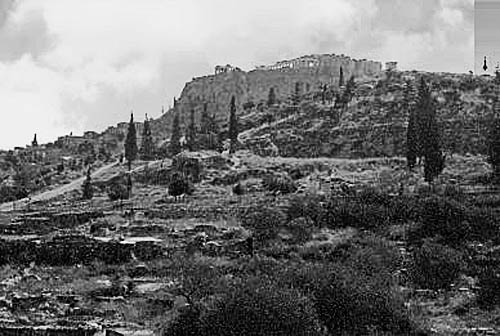
1966 A corner of the Temple: Acropolis.
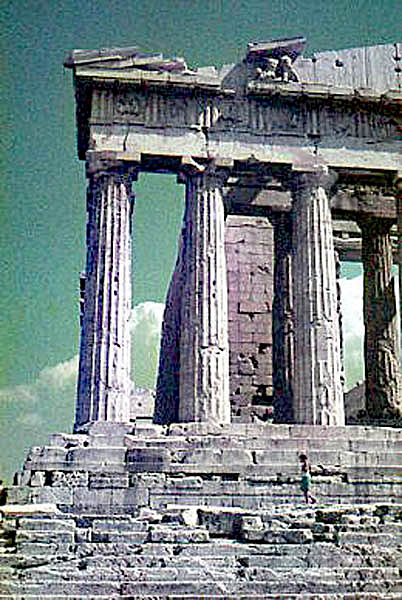
1966 Greek Corinthian helmet, Bronze warrior owl decoration helmet.
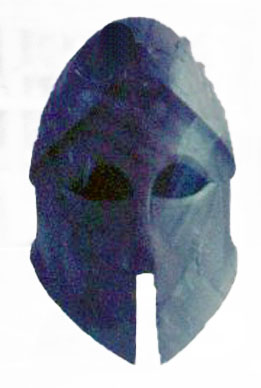
1964 City of Delphi.
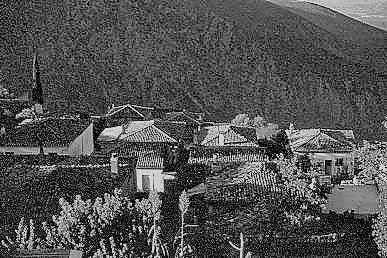
1964 Delphi The Tholos.
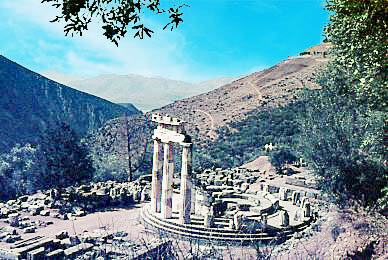
1964 Antoniaus, Cupbearer for Hadrian.
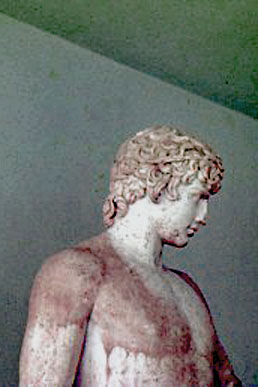
1964 Delphi Temple of Apollo.
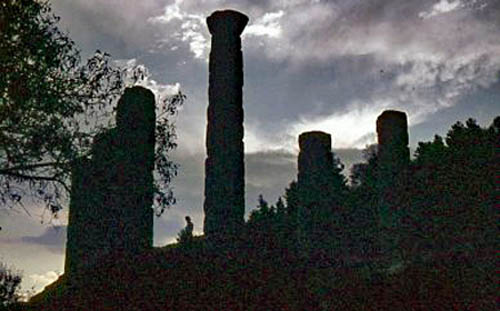
1966 The Corinth Canal.
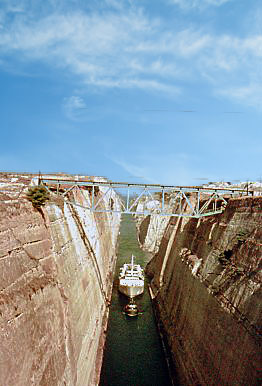
1966 The Meteora Area.
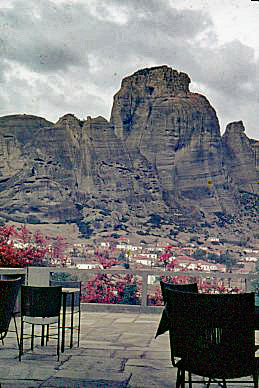
1966 Sounion The Poseidon Temple at dusk.
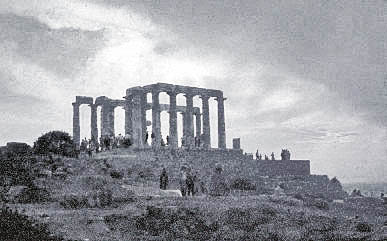
Oct 15, 2022 20:31:09 #
Architect1776 wrote:
Interesting history, are thse scans? They seem a bit odd.
Yes, and before I bought my Epson. They looked much better in my file but that was before I blew them up to the size you see. I was going to apologize for the photos but decided to just use them. I am not surprised by your question.
Larry B.
Oct 15, 2022 17:30:00 #
Hot Springs
1541, Spanish explorer Hernando De Soto, was the first European to visit the "Valley of the Vapors", as the Native Americans called the area.
The springs were "neutral ground" where tribes would gather in peace to enjoy nature's bounty. White settlers began arriving in 1807. In 1832, President Andrew Jackson made Hot Springs the first Federal Reservation in the area surrounding the city of Hot Springs in an effort to conserve its natural resources. Hot Springs is located along the forested southwestern slope of Hot Springs Mountain, with 47 "hot springs
The first bathhouses were basically tents fashioned out of canvas and wood; these were replaced by poorly constructed wooden buildings. The bathhouses of the early 1900s, which lined Bathhouse Row, were exquisite structures replete with marble, brass and stained-glass accents, housing state-of-the-art machines, gymnasiums and beauty shops. Congress declared the reservation the 18th National Park. During the early 1900s, '20s and '30s, Hot Springs was a popular destination for the rich and famous, drawing the likes of Babe Ruth, Andrew Carnegie and F.W. Woolworth.
The 1950s resulted in a rapid decline in water therapies. Today, visitors tour the Fordyce Bathhouse Museum and National Park Visitor Center which has been restored to look as it did from 1915-1920. The city of Hot Springs is proud to have been the boyhood home of the 42nd President of the United States, William Jefferson Clinton. The home of the Clintons, located at 1011 Park Avenue, is not open for tours.
Little Rock
Little Rock is the capital and most populous city of the state of Arkansas. Benard de la Harpe, a Frenchman leading an exploration party up the Arkansas River on April 9, 1722, noted the first outcropping of rock he had seen along the banks since leaving New Orleans. Largely wilderness, inhabited by the Quapaw or Arkansa Indians; in 1806, settlers from the east coast started coming. Settlement of Little Rock began in the spring of 1820. The first steamboat to reach Little Rock was the Eagle, which arrived on March 16, 1822. From that time onward, Little Rock’s role as a commercial center of Arkansas increased. On November 7, 1831, Little Rock was officially chartered as a town and on November 2, 1835, Little Rock became a City (Little Rock, 2016).
Eureka Springs Thorncrown Chapel aka Chapel in the Woods
In 1971, school teacher Jim Reed purchased the property for his retirement home. The area always attracted a lot of campers and others attracted to its beauty, but left a lot of debris which required constant cleanup. Jim decided the spot needed a structure to give them a place to sit and enjoy nature.
He decided that a Chapel would be perfect to make visitors careful of the environment.
Construction began in 1979, but the money ran out when the building was only half complete. Jim was not able to get financing and then decided that the project would remain in God’s hands. Sometime later, a woman from Illinois offered financing and the building was completed in 1980.
The Chapel was designed by E. Fay Jones and Maurice Jennings in the Ozark Gothic style. It is constructed of treated yellow pine stained black with 15 48 foot tall arches.
In 2000 it was voted fourth best building of the year in USA by the American Institute of Architects.
1541, Spanish explorer Hernando De Soto, was the first European to visit the "Valley of the Vapors", as the Native Americans called the area.
The springs were "neutral ground" where tribes would gather in peace to enjoy nature's bounty. White settlers began arriving in 1807. In 1832, President Andrew Jackson made Hot Springs the first Federal Reservation in the area surrounding the city of Hot Springs in an effort to conserve its natural resources. Hot Springs is located along the forested southwestern slope of Hot Springs Mountain, with 47 "hot springs
The first bathhouses were basically tents fashioned out of canvas and wood; these were replaced by poorly constructed wooden buildings. The bathhouses of the early 1900s, which lined Bathhouse Row, were exquisite structures replete with marble, brass and stained-glass accents, housing state-of-the-art machines, gymnasiums and beauty shops. Congress declared the reservation the 18th National Park. During the early 1900s, '20s and '30s, Hot Springs was a popular destination for the rich and famous, drawing the likes of Babe Ruth, Andrew Carnegie and F.W. Woolworth.
The 1950s resulted in a rapid decline in water therapies. Today, visitors tour the Fordyce Bathhouse Museum and National Park Visitor Center which has been restored to look as it did from 1915-1920. The city of Hot Springs is proud to have been the boyhood home of the 42nd President of the United States, William Jefferson Clinton. The home of the Clintons, located at 1011 Park Avenue, is not open for tours.
Little Rock
Little Rock is the capital and most populous city of the state of Arkansas. Benard de la Harpe, a Frenchman leading an exploration party up the Arkansas River on April 9, 1722, noted the first outcropping of rock he had seen along the banks since leaving New Orleans. Largely wilderness, inhabited by the Quapaw or Arkansa Indians; in 1806, settlers from the east coast started coming. Settlement of Little Rock began in the spring of 1820. The first steamboat to reach Little Rock was the Eagle, which arrived on March 16, 1822. From that time onward, Little Rock’s role as a commercial center of Arkansas increased. On November 7, 1831, Little Rock was officially chartered as a town and on November 2, 1835, Little Rock became a City (Little Rock, 2016).
Eureka Springs Thorncrown Chapel aka Chapel in the Woods
In 1971, school teacher Jim Reed purchased the property for his retirement home. The area always attracted a lot of campers and others attracted to its beauty, but left a lot of debris which required constant cleanup. Jim decided the spot needed a structure to give them a place to sit and enjoy nature.
He decided that a Chapel would be perfect to make visitors careful of the environment.
Construction began in 1979, but the money ran out when the building was only half complete. Jim was not able to get financing and then decided that the project would remain in God’s hands. Sometime later, a woman from Illinois offered financing and the building was completed in 1980.
The Chapel was designed by E. Fay Jones and Maurice Jennings in the Ozark Gothic style. It is constructed of treated yellow pine stained black with 15 48 foot tall arches.
In 2000 it was voted fourth best building of the year in USA by the American Institute of Architects.
State Capital Building in Little Rock.
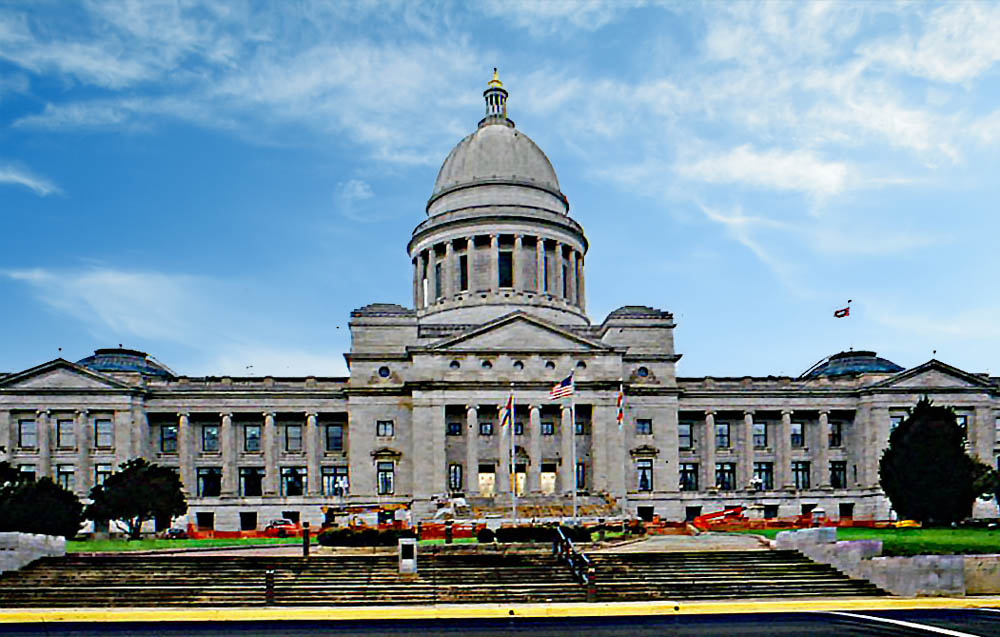
Looking down on town of Hot Springs.
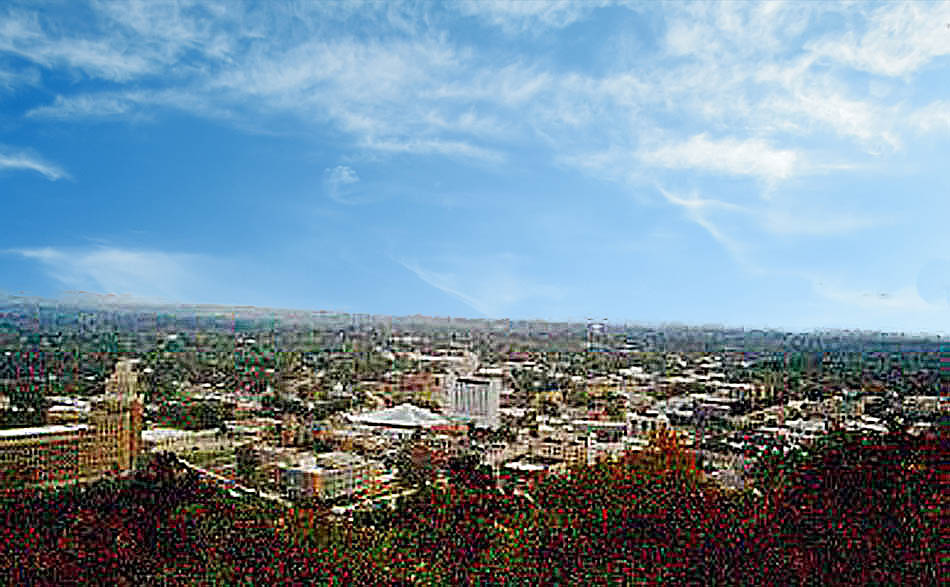
Restored Bathhouse Row.
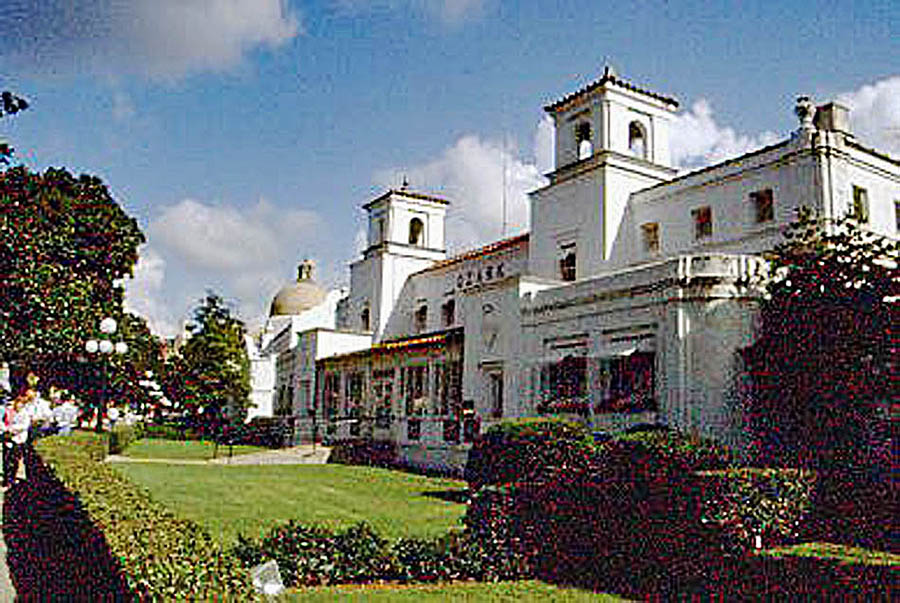
Museum and only open facility for visitors and services (Massage).
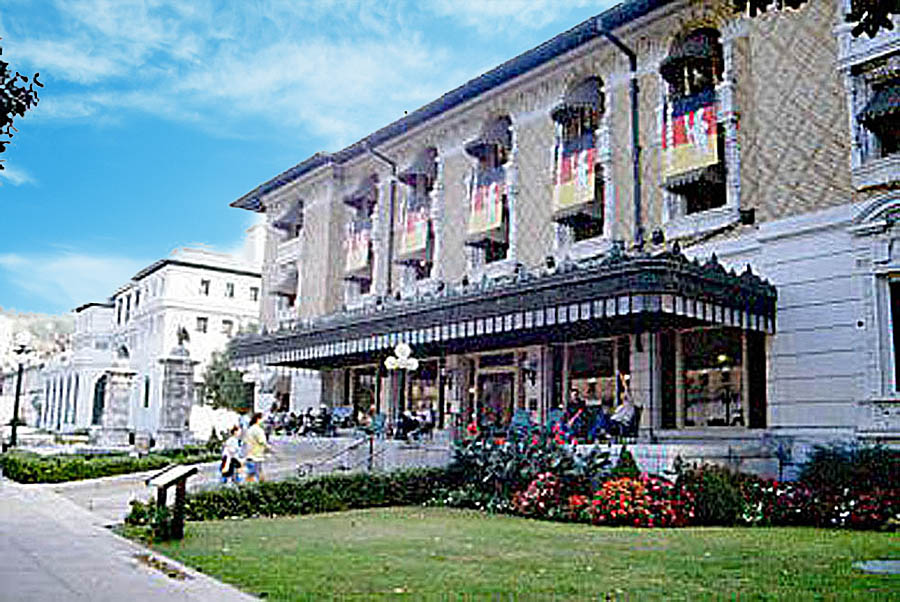
Restored Bathhouse Lobby.
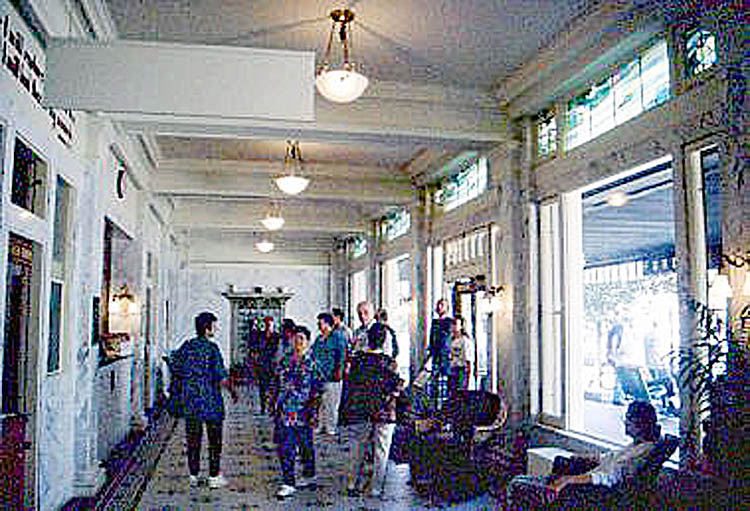
Tour group in museum lobby.
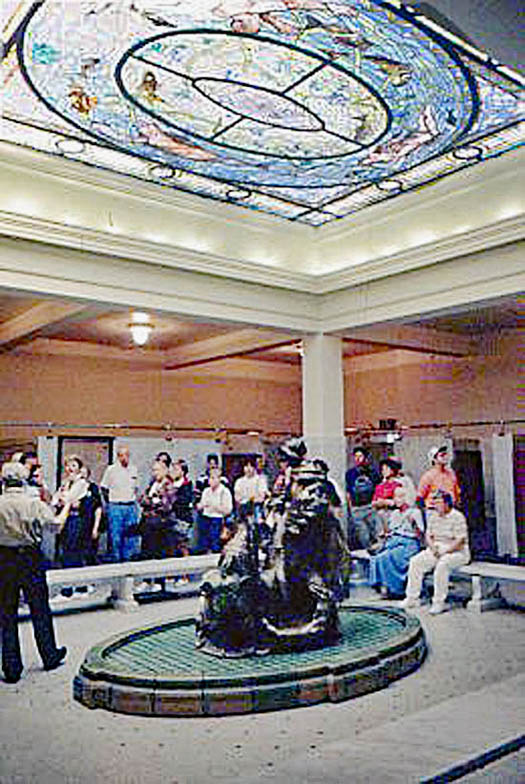
Bathhouse museum spaces on tour.
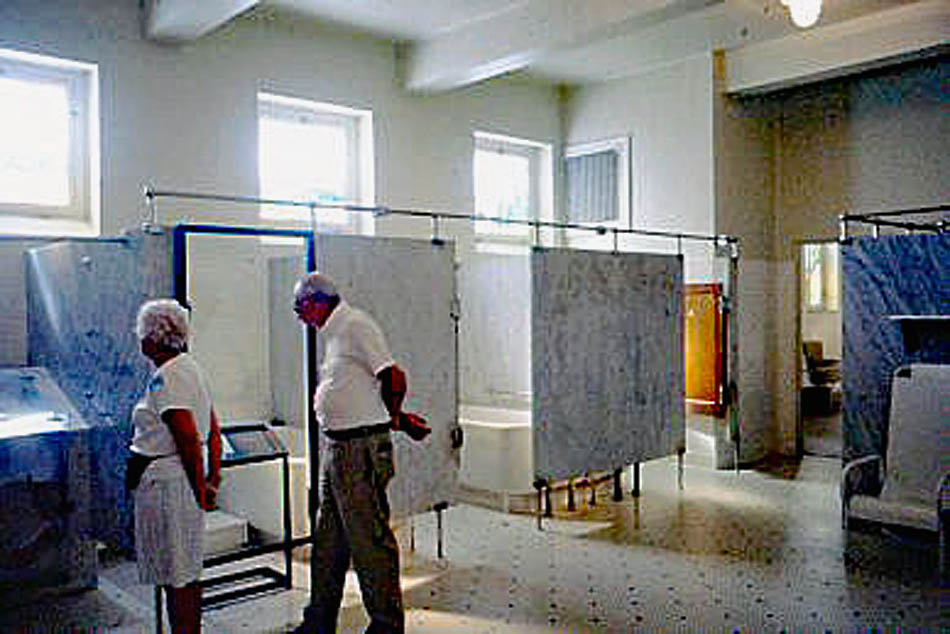
Entrance to Chapel in the Woods.
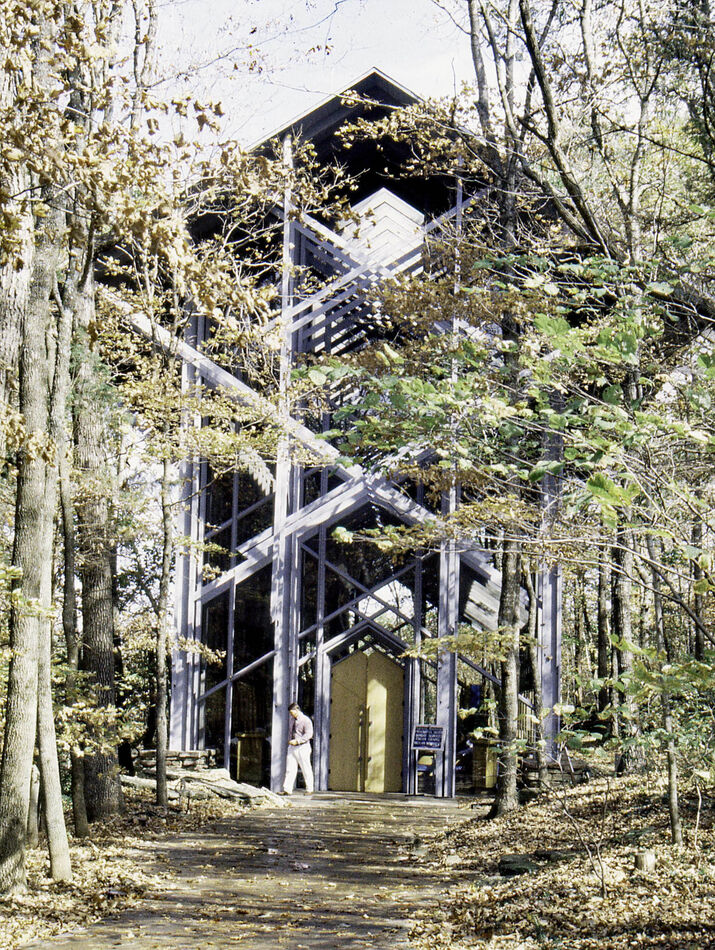
(Download)
Chapel Interior.
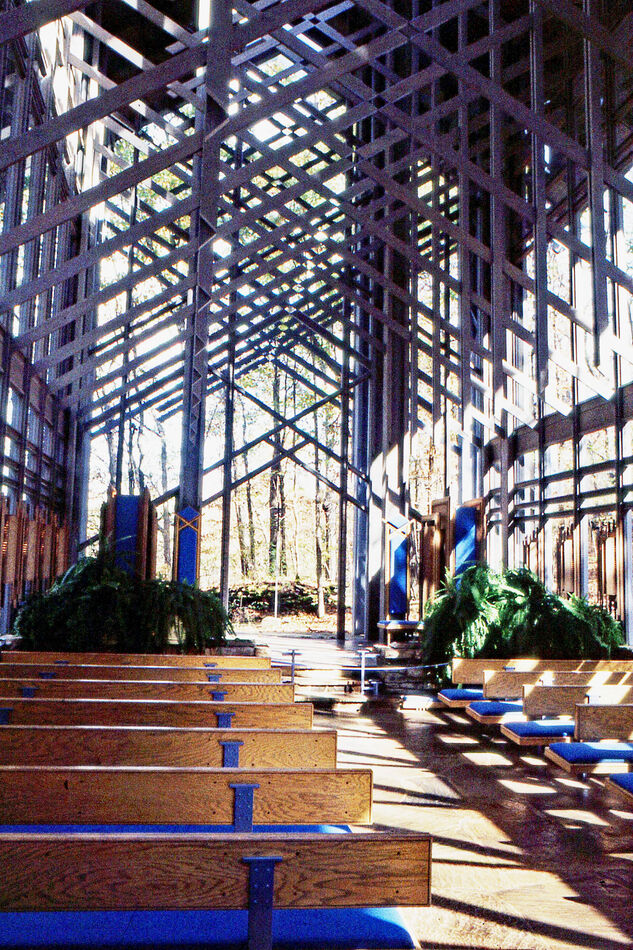
(Download)
Peaceful view of woods outside.
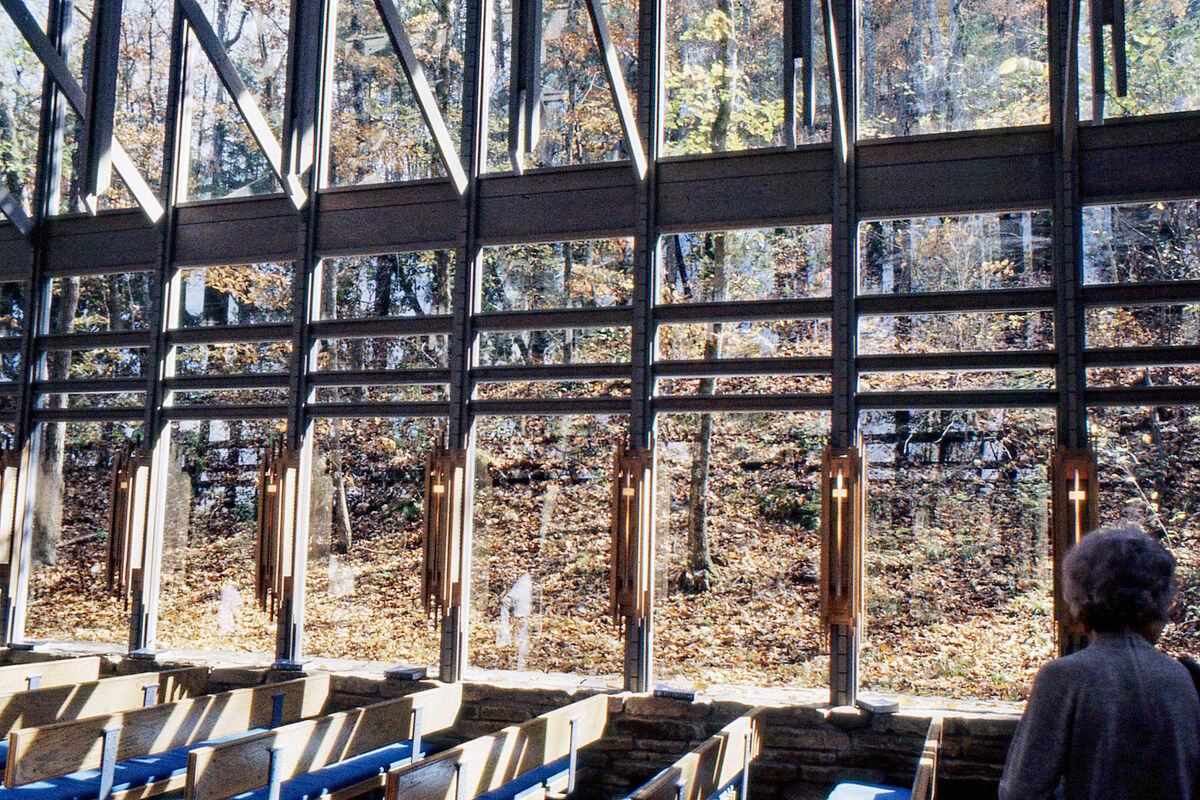
(Download)
Oct 12, 2022 14:07:10 #
Architect1776 wrote:

Hi,
Thanks for the thumbs-up. It is appreciated.
Larry B.

Oct 12, 2022 14:05:30 #
Longshadow wrote:
Nice set!
Thank you. Glad you liked them.
Larry B.

Oct 12, 2022 14:04:30 #
jaymatt wrote:
Nice city scenes.
Hello,
Thanks for the comment.
Larry B.

Oct 12, 2022 14:01:04 #
Hereford wrote:
Great set from a very beautiful city.
Hello,
Thanks for your comment. It is truly a great place.
Larry B.

Oct 12, 2022 13:59:30 #
Wasabi wrote:

Hi,
Thanks for the Thumbs up!
Larry B.

Oct 12, 2022 13:58:26 #
Johanna wrote:
Now I have seen a few areas from your pictures that I did not see on my visit there.
Johanna, Thanks for looking. The two part city has so much to look at, one could spend months there and not get bored. Glad you liked the series.
Larry B.

Oct 12, 2022 13:56:11 #
Tdearing wrote:
Very enjoyable, thanks.
Hi, Glad you liked the tour.
Larry B.
